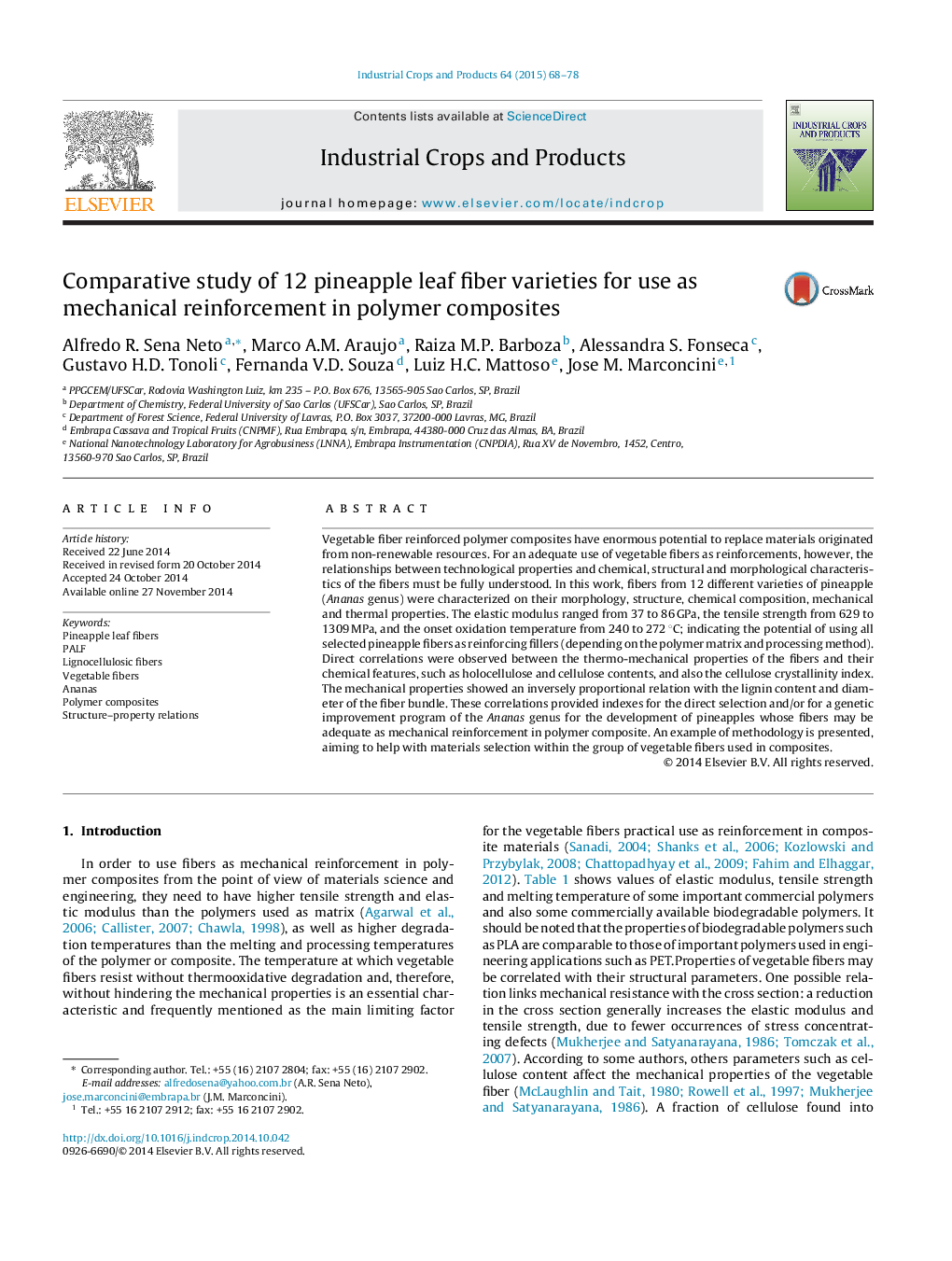| Article ID | Journal | Published Year | Pages | File Type |
|---|---|---|---|---|
| 4513024 | Industrial Crops and Products | 2015 | 11 Pages |
•Leaf fibers from 12 different varieties of pineapple were characterized and have been evaluated as suitable to be used as mechanical reinforcement in polymer composites.•The elastic modulus ranged from 37 to 86 GPa and tensile strength from 629 to 1309 MPa.•The cellulose content and the cellulose crystallinity index can be used as indicators for materials selection.•An example of methodology is presented, which may help to select vegetable fibers for use in composites.
Vegetable fiber reinforced polymer composites have enormous potential to replace materials originated from non-renewable resources. For an adequate use of vegetable fibers as reinforcements, however, the relationships between technological properties and chemical, structural and morphological characteristics of the fibers must be fully understood. In this work, fibers from 12 different varieties of pineapple (Ananas genus) were characterized on their morphology, structure, chemical composition, mechanical and thermal properties. The elastic modulus ranged from 37 to 86 GPa, the tensile strength from 629 to 1309 MPa, and the onset oxidation temperature from 240 to 272 °C; indicating the potential of using all selected pineapple fibers as reinforcing fillers (depending on the polymer matrix and processing method). Direct correlations were observed between the thermo-mechanical properties of the fibers and their chemical features, such as holocellulose and cellulose contents, and also the cellulose crystallinity index. The mechanical properties showed an inversely proportional relation with the lignin content and diameter of the fiber bundle. These correlations provided indexes for the direct selection and/or for a genetic improvement program of the Ananas genus for the development of pineapples whose fibers may be adequate as mechanical reinforcement in polymer composite. An example of methodology is presented, aiming to help with materials selection within the group of vegetable fibers used in composites.
